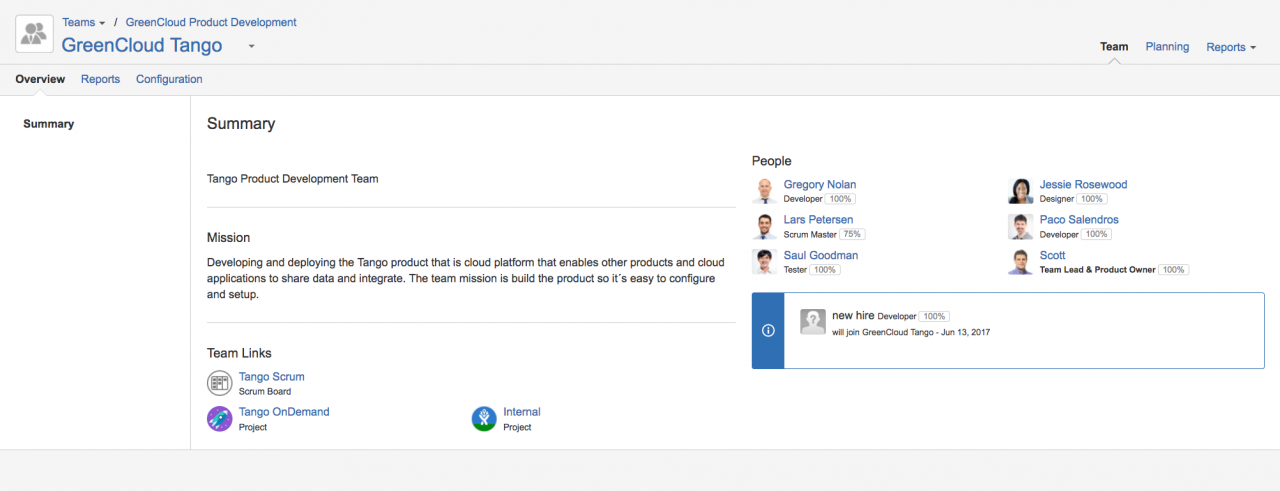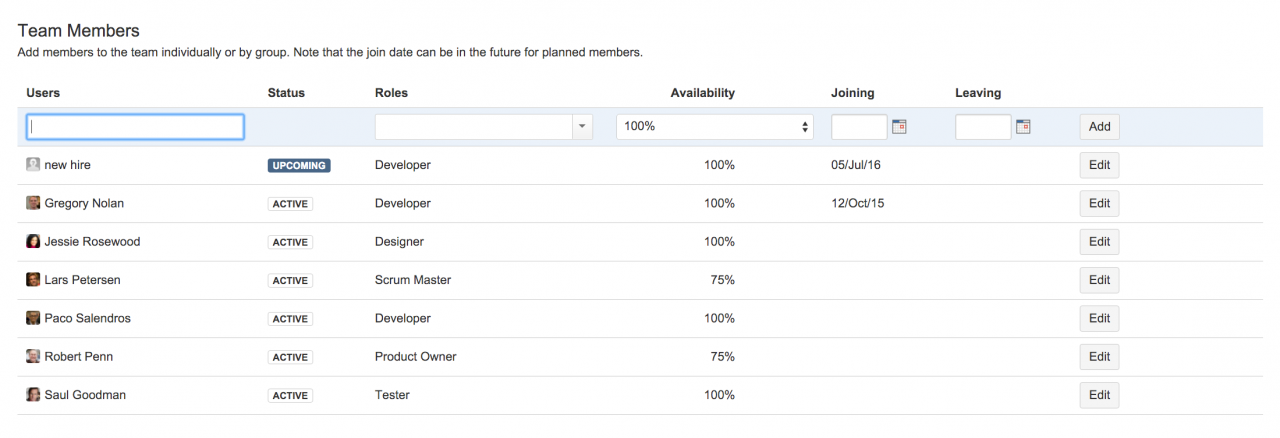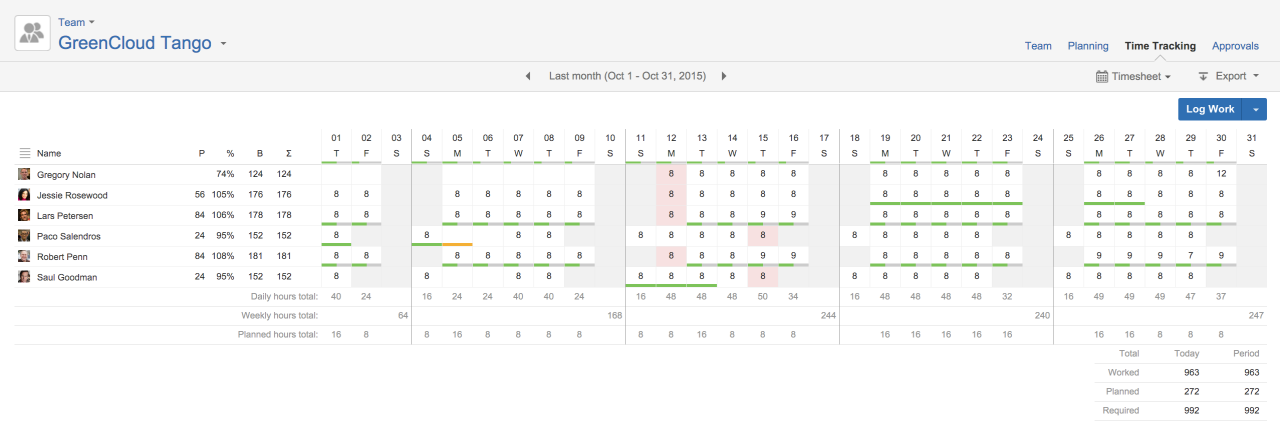Connecting Distributed Agile Teams: Superhuman Results Regardless of Where You Sit
This is a guest blog from Bjarki Óskarsson, Product Marketing Manager and Leifur Jón Elíasson, Product Marketing Specialist - both from Tempo.
In today’s global economy, few project teams are limited to the confines of an office. A project team may consist of several developers or other team members around the world, or scattered throughout multiple corners of an office within the same location. It may be made of multiple team members from different organizations. Dispersed teams provide many advantages to projects, but they can also present some unique challenges.
Distributed teams can allow team leads and businesses to leverage the best talent no matter where it is found. These types of teams benefit from a diversity of perspectives, creative thinking, and problem solving, shorter development cycles, and faster customer response times made possible by overlapping time zones. However, they can also present unique challenges if team leads and project managers don’t take into account certain issues like cultural and communication barriers, metrics, and workflows.
Effective team communication and balance is vital to drive businesses to succeed, but geographical distances often make it difficult to keep everyone on the same page. Connecting distributed teams together, regardless of time and place, is possible with products from the Atlassian product suite, including JIRA, HipChat, and Tempo solutions, which support JIRA Data Center licensing for the largest enterprise customers with dispersed teams.
The smart strategy is to focus on the needs and skills of your team and to implement tools and consistent processes that will help manage them better. Your standard bottom-line goals will take care of themselves if you can find the proper balance for managing your distributed teams.
1. Build the right team
A basic premise of any team is that they’re working together to achieve a common goal. To ensure that all members of a project team understand these goals and their expected tasks and responsibilities, it’s vital to establish clear roles and corresponding responsibilities early on.
Tempo’s centralized Teams space—a system plugin that carries across all four Tempo products—helps project managers and team leads define their teams and keep track of their projects, releases, and internal tasks centrally within JIRA.

Create a collaborative team structure for all team members to refer to, so that key people responsible for daily communications with the rest of the project team are identified.
2. Clearly define team roles and expectations
With Tempo Teams, you can define your project team, team lead, and mission, establish team members, roles, capacity, as well as start and end dates (this is especially helpful for contractors and anticipated new hires for future planning). You can also manage team member permissions, and designate workload and holiday schemes, which may differ depending on where a team member is located.

This information is helpful for planning, time tracking, and cost rate calculations in Tempo, which will reflect the schemes to which individual team members have been assigned.
It also serves as an important point of reference to let team members know the roles and responsibilities across their team. Team leads can quickly determine who is in the office, view the expected capacity of each team member in real time, and react to any sudden changes.

Team members may be connected to one or more teams, and teams may be connected to one or more JIRA projects or agile boards, with team information being synced up with all Tempo products. This can include a project that all organizational teams can be assigned to for internal activities that span across an organization—such as vacation time, sick days, or business travel—that need to be accounted for.
3. Foster strong communication
The distance between remote teams working on the same project can be eliminated by use of communication tools such as HipChat, Confluence, and @mentioning capabilities in JIRA. This keeps collaboration and transparency in the forefront, helping to streamline team communications throughout the development or project process.
To infuse a sense of team spirit and trust, being able to attach a face to the person who you’re working and communicating with is important. Tempo’s teams space utilizes JIRA’s user avatars, so team members located in different places can feel connected. Team member activity streams in the team space give you a quick overview of the JIRA issues, tasks, and stories that team members are working on.
Of course, maintaining a rhythm of consistent communications is also important to establish a ‘human-side’ to the distributed team. Kick-off meetings, daily standups—where team members all connect, whether in person or by video conferencing—team members can address with their team members what they’ve been working on, what they’re going to be working on next, and any challenges they face—serve as important factors that help dispersed teams feel connected.
4. Establish process workflows
A clearly defined workflow should be established and reviewed with a distributed team to ensure that all team activities are synchronized. Documenting a process workflow, such as in Confluence, allows a team to streamline, validate, and verify expected activities that could impact project delivery timelines.
Tempo Planner’s new team board, included in our 3.1 release, helps both scrum teams and project teams that aren’t working in scrum to visualize their workflow of tasks and stories allowing a centralized way to manage team efforts more efficiently and to keep priorities synchronized.
5. Calculate team and program capacity centrally
Many team leads face the hassle of calculating their team capacity using multiple tools, including spreadsheets, which makes the process complicated, time consuming, and in some instances, a liability. Spreadsheets, superfluous team meetings, phone calls, and emails that get buried in your inbox can be a thing of the past.
Harnessing information from JIRA, you can validate your team’s capacity with Tempo Planner’s team and program capacity reports, which help product managers plan for higher-level epics and requirements for the longer road ahead, or drill down to more granular planning by day, week, or month.
“I can predict the long-term outcome of your success if you show me your daily habits.”
—John Maxwell
6. Prioritize your sprints visually
Although prioritizing sprints and release backlogs is an integral part of the product development process, team collaboration can sometimes be difficult, particularly when team members are sitting in different offices and even in different time zones.
With JIRA and Tempo Planner, team leads and product owners can organize stories that deliver the most value to their customers at the end of a sprint—accessible by all team members—keeping everyone focused and on the same page. Team member commitment can be configured to calculate sprint velocity and load. In addition, Tempo Planner’s new team board helps development teams and team leads working in iterations to visualize the progress of their longer-term initiatives.
7. Detail planning and tasks
To ensure that your teams understand the assigned tasks and are progressing as expected, it’s important to have a milestone-driven work breakdown structure that identifies the effort associated with each task, and identifies the timeline of when the tasks need to be completed.

With Tempo Planner, teams can visualize their short-term and long-term priorities, manage their backlogs, visually plan their sprints and releases, and keep expected deliverables within a realistic scope. Once a Tempo team is connected to a particular project or agile board in JIRA, Tempo Planner guides you through a visual overview of the story points and tasks that need to be accomplished for your next release.
If your team is over or under planned, circle back to your agile board and add or remove from the backlog to fulfill or relieve your team’s capacity as needed. This level of detail ensures that everyone is clear on their assignments, and that any delays (and corresponding effects) can be identified as early as possible, so that a mitigation plan can be implemented if need be.
8. Track your team’s progress
Keeping track of how your team is spending its valuable time is an important aspect of team and project management—the things that get measured are the things that get done. For most of us, time tracking is more about making every hour count than it is about counting every hour.
Time tracking is not just about awareness: it’s about change. When you realize how you spend your time, it makes clear where your team’s priorities are—or ought to be—and it shows you how you might make that time better match your priorities. This is important not only for teams that need to keep track of time for client billing, but also for businesses that want to keep track of how time is spent across multiple projects and teams.
Tempo Timesheets enables users not only to objectively keep track of how time is spent on JIRA issues, it gives team leads information to determine how best to manage and inspire team behavior to meet your strategic goals. Team reporting is possible with JIRA and Tempo Timesheets, which breaks down all estimated and worked on issues, time performed by a team for a project during a given timeframe, and can be useful to track activities that fall outside of the project and team’s scope.

Reports can be viewed by day, week, month, or a custom period, so team leads can ascertain whether work is going as planned, where shortages exist, and where additional efforts should be focused. Timesheet reports are also available for team members, projects, customer accounts, issues, or by a custom JIRA filter.
Team leads and account managers can also get a breakdown of billable hours for their entire team, which can be exported for further analysis and customer billing using Tempo’s REST API. These reports help keep teams on schedule, and can also be used for future projections regarding team resources. Tempo Timesheets allows for budget management, team utilization reports, and billing workflow management for professional services teams in need of a solution for customer account management. Keeping an accurate track of team progress means knowing what’s working and what isn’t, and making adaptations before potential problems escalate.
9. Establish roadmaps for refinements
To ensure that your team continues to increase its value to the project team, it is important to leverage the daily, weekly, and monthly reports and metrics to identify areas of improvement and streamlining, for instance, for testing processes and test strategies. These refinements should be prioritized and scheduled for implementation by the team, and tracked for progress along with other project deliverables. Tempo Folio’s new portfolio and project roadmap planning capabilities can help PMO’s and project managers best manage, prioritize, and track business initiatives, keeping track of their progress and performance with real-time reporting.
10. Make the most out of your retrospectives
No matter how fantastic a scrum or project team is, there’s always room for improvement. Although a good scrum team will continually seek out new ways to improve, the sprint retrospective is a good opportunity for the team to deliberately reflect on how they are doing and to find ways to improve for their next iteration.
JIRA Agile’s sprint report provides time tracking data for every sprint, and can be especially useful for agile teams at the retrospective level. Get an overview of all tasks within the sprint that were completed and those that haven’t been, as well as the estimated versus actual time spent on them. Use the data to help you plan your next sprint and get your team up and running
Most importantly, getting things done…
Establishing and managing distributed teams is a complex challenge, but one that can be tackled if these challenges are addressed with due care. Cultural differences, time zone variations, and lack of face-to-face time contribute to the intricate nature of this model. In addition, some companies focus too much on cost-cutting objectives. To successfully manage distributed teams, it’s important to focus on people, processes, and communications.

Comments:
Many thanks to Serena Chan for arranging this guest blog for us! For more of her insightful blog entries, check out the Tempo Blog! http://blog.tempo.io/author/serena/
By nigel
on Tue, November 01, 2016